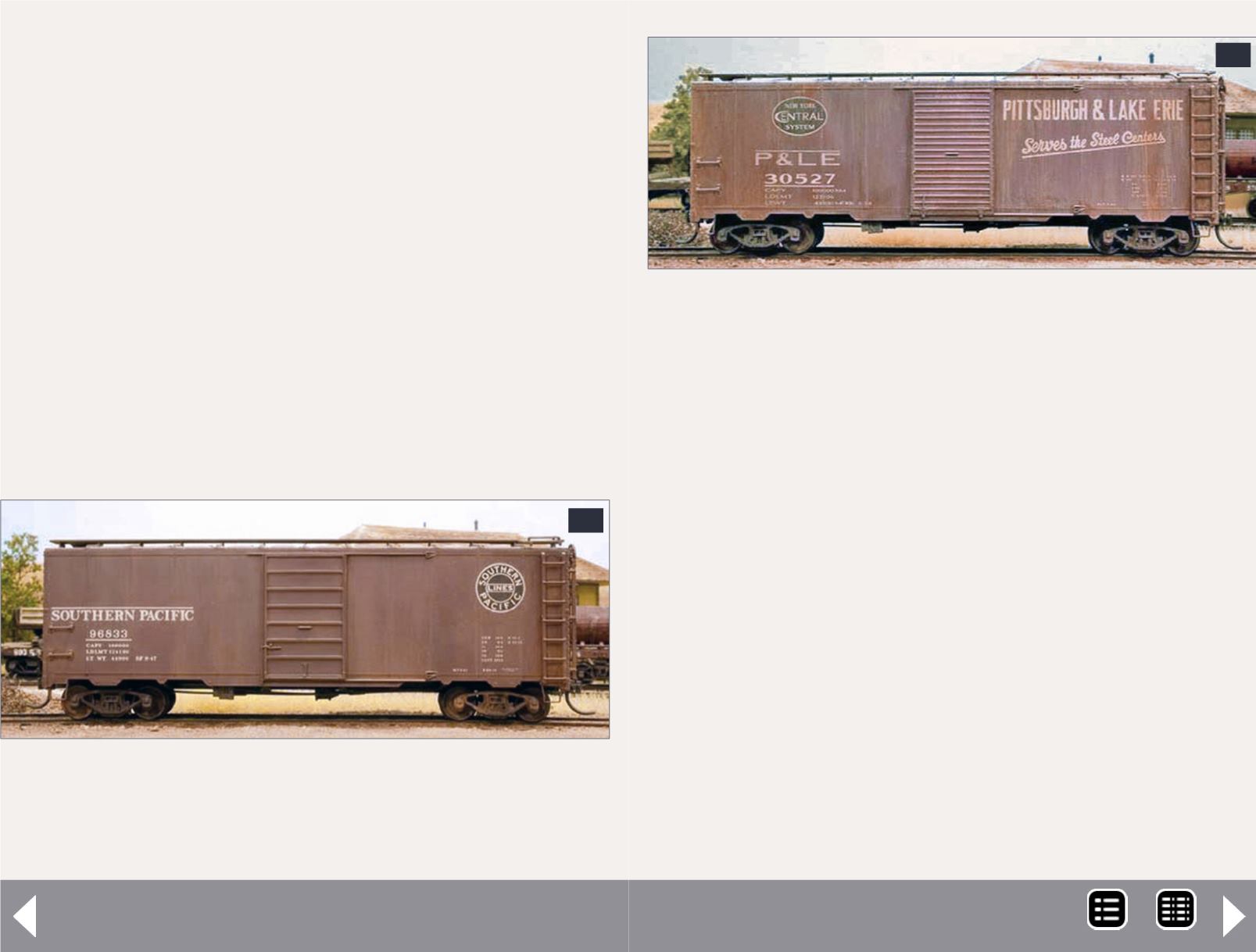
Step Six: Add a little weathering:
At this point we now have some semi-weathered cars that
run well and look pretty good. However, most master model-
ers don’t consider a car complete until it has been weathered.
Weathering is an area of the hobby that has really become
more popular in the past decade or so.
There are a number of different techniques to try – some old
and some new. A little research will turn up lots of weathering
approaches to try. I recommend exploring as many techniques
as possible, and then choosing a few that you like and hone
those skills. While you shouldn’t shy away from weathering a
car, keep in mind that weathering is a skill that takes practice.
If you are new to weathering, test various techniques out on
cars from the junk bin. As an alternative, if you have cars that
are going to be replaced by better detailed models, practice
weathering techniques on them. If the weathering comes out
badly, it’s no loss, since you were passing these cars along
Batch-building freight cars - 11
18: This Red Caboose boxcar is weathered with fine
layers of chalk powders. The chalk has been brushed
down the side of the car in vertical stripes and then
blended for an even coat.
18
anyway. If they come out exceptionally well, then you can over-
look the fact that they lack great detail and run them anyway
because they look so cool.
Pick your favorite weathering techniques and go at the cars.
Some of these might include: Chalks, powders, paints (airbrush
and/or brush applied), washes, and products such as Rustall.
Remember that you have spent a lot of time building your
models, so take your time weathering them.
Let’s take a look at some general weathering concepts, fol-
lowed by a few examples of common techniques.
Weathering concepts:
Weather the opposite
Dark colors weather lighter, and light colors darken as they are
exposed to the elements.
19: This heavily weathered boxcar was brush-painted
with acrylic washes and is right at my limit for
acceptable weathering. The washes were applied in
vertical streaks down the car and then blended. The
trick with acrylic paint is to keep it from pooling or
creating hard edges as it dries.
19
MRH-Mar 2014


